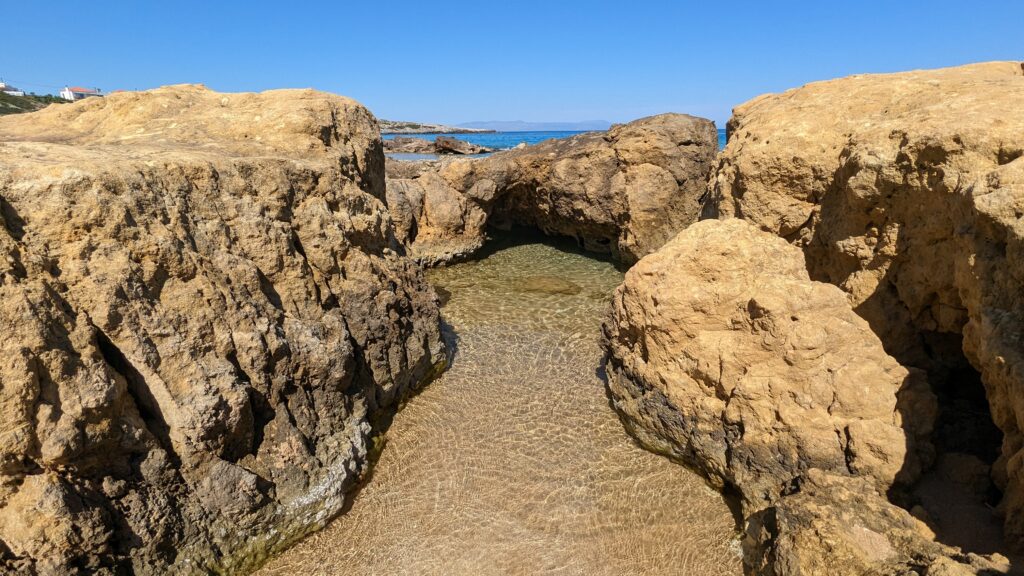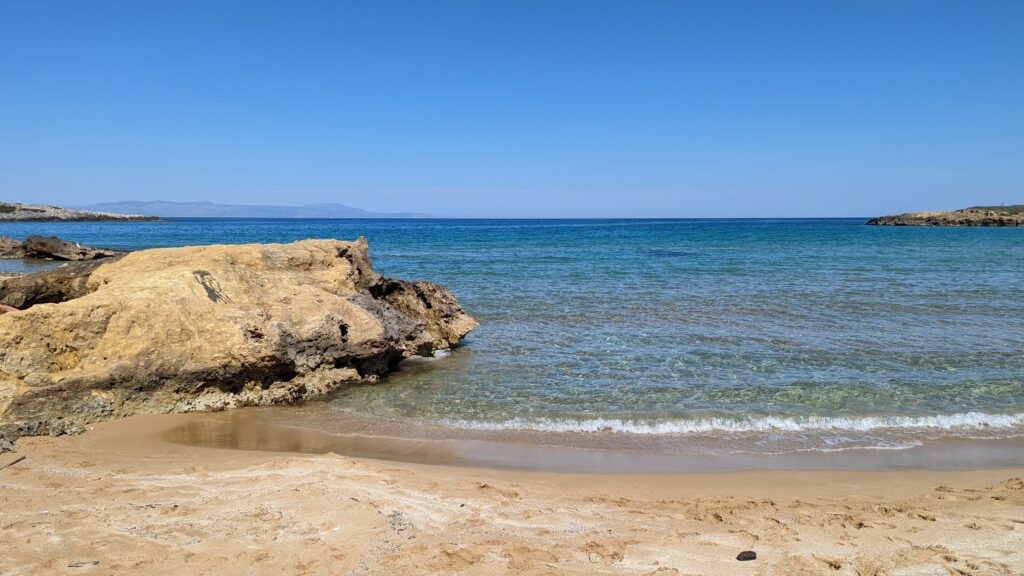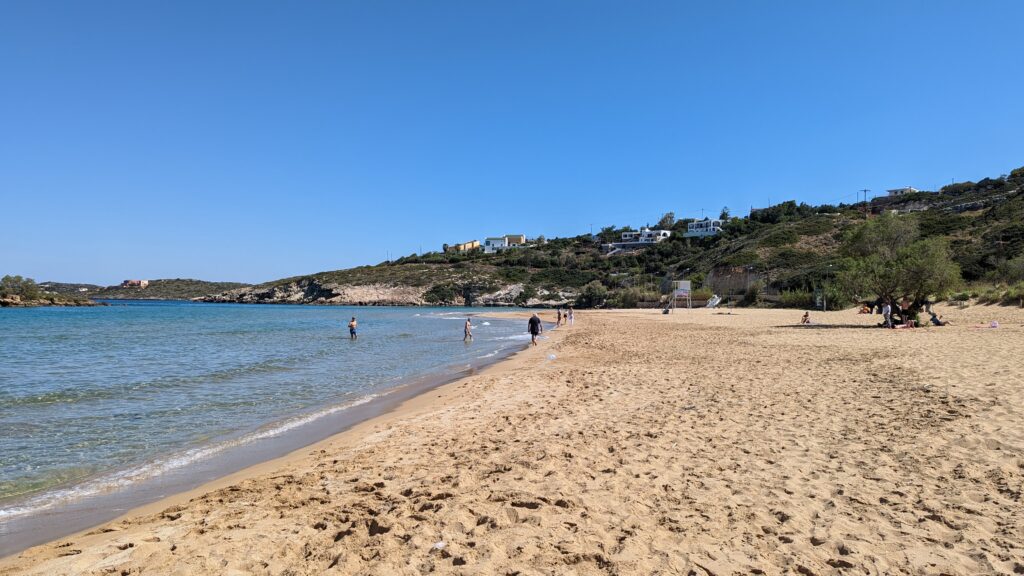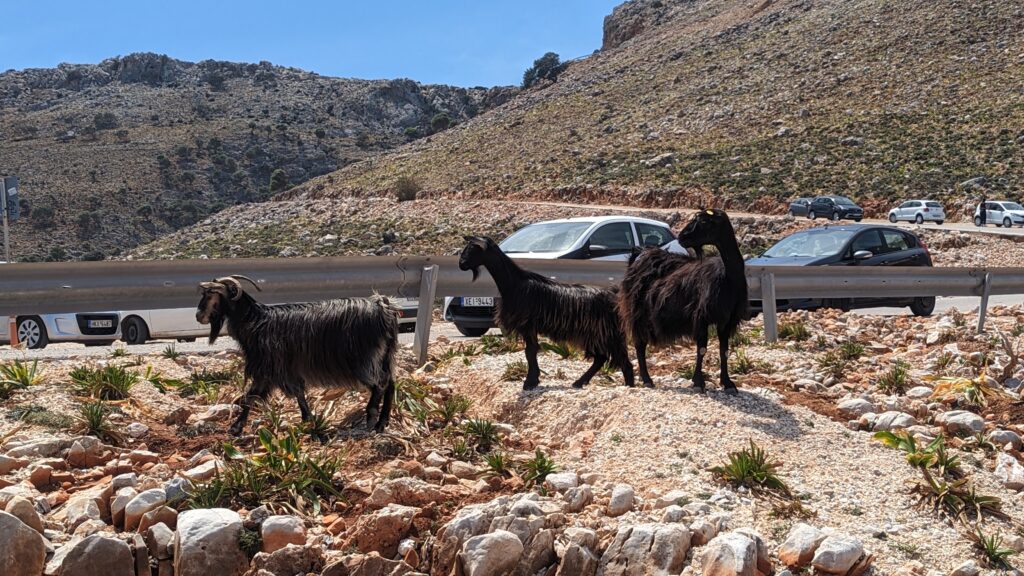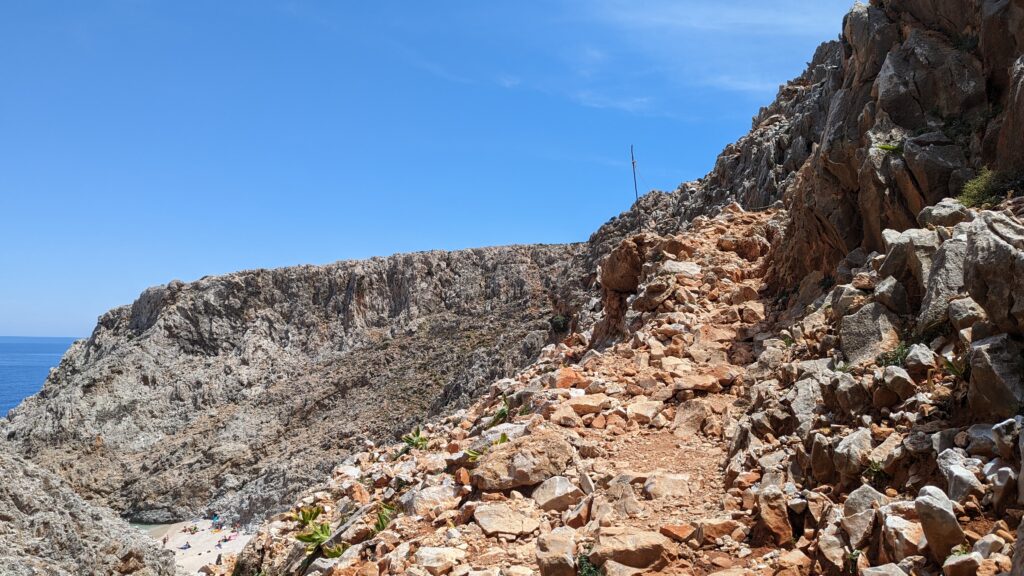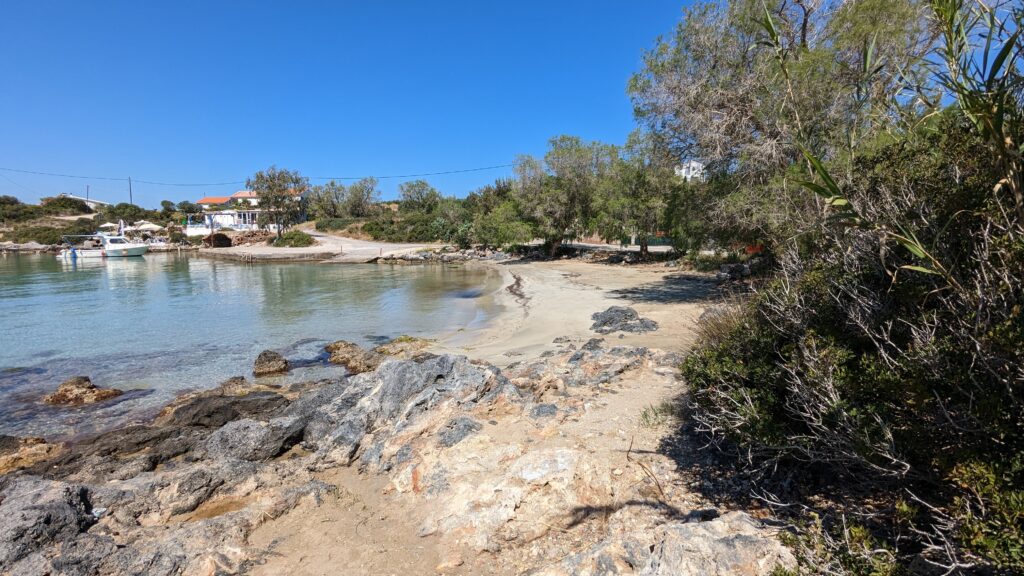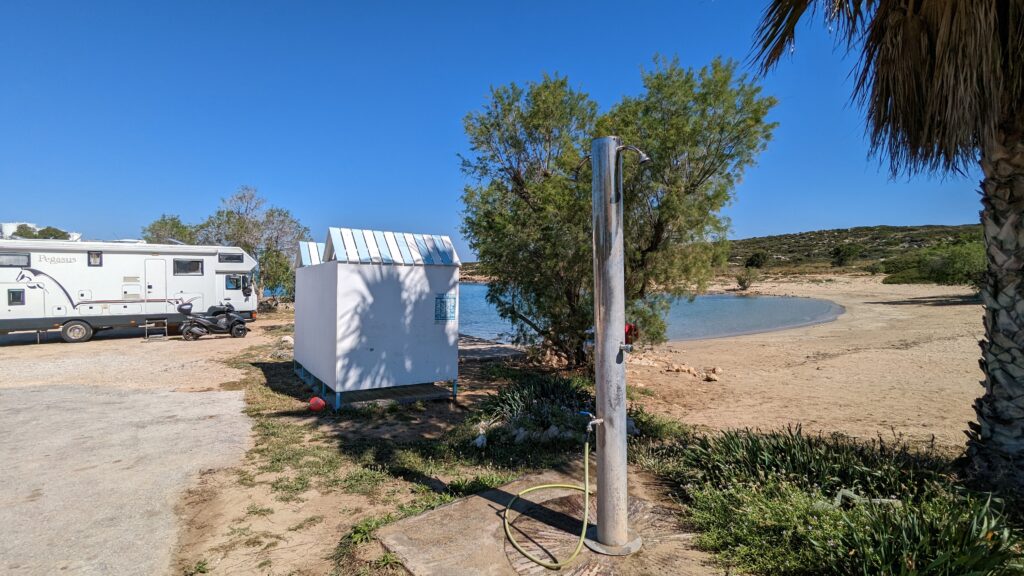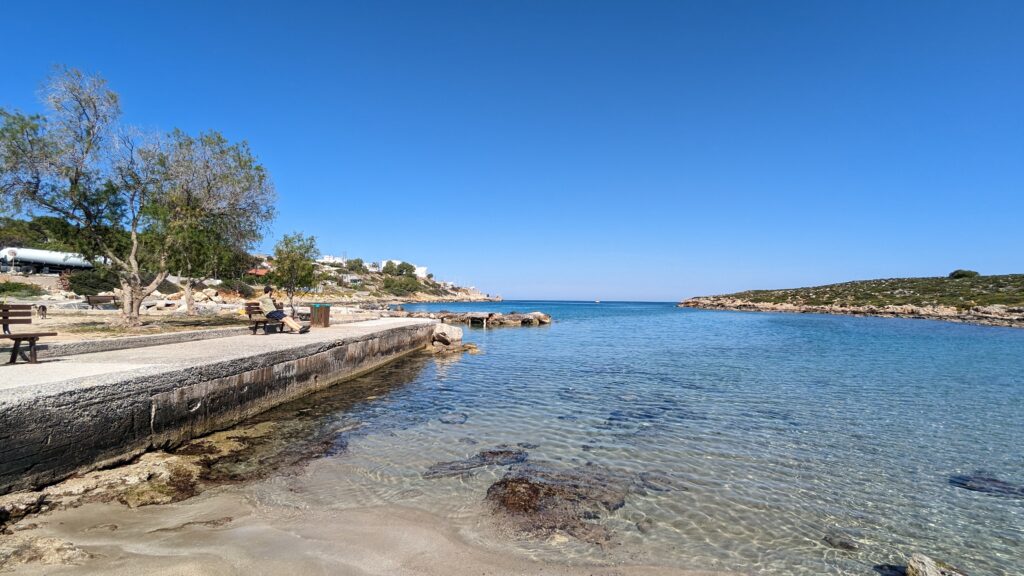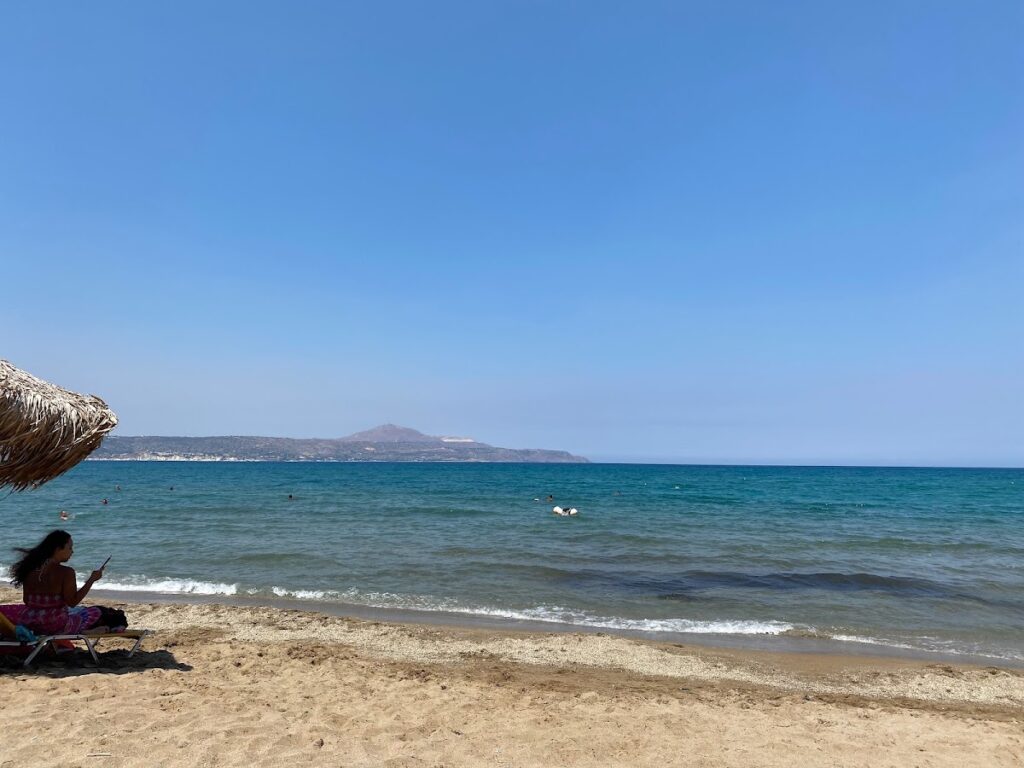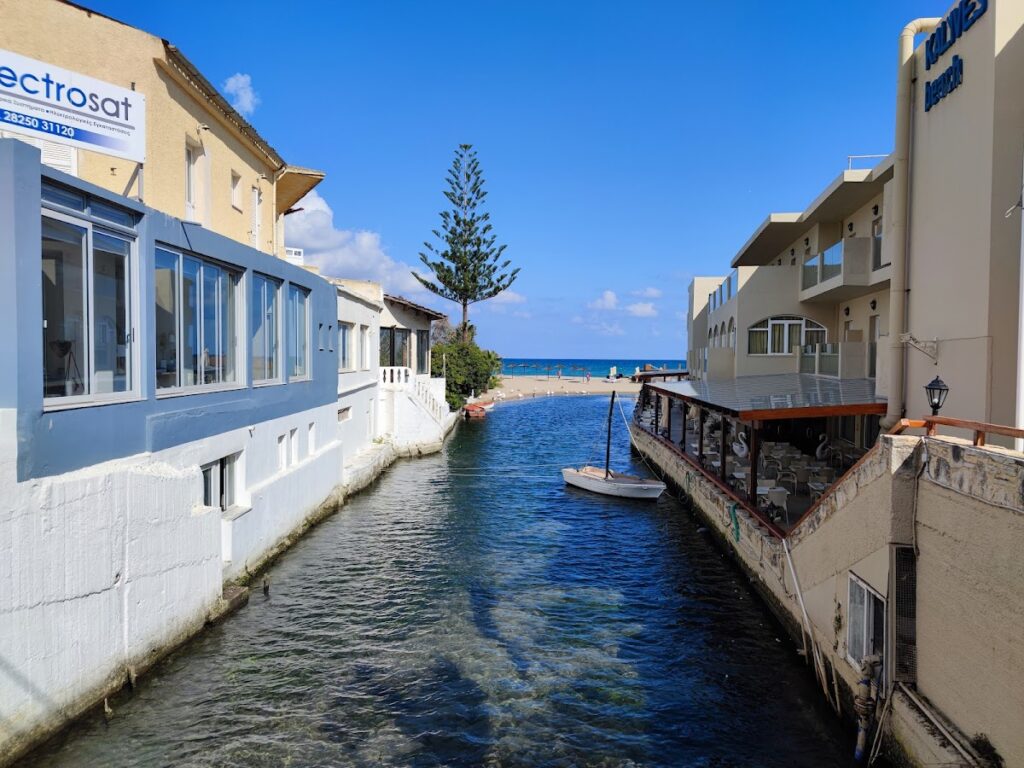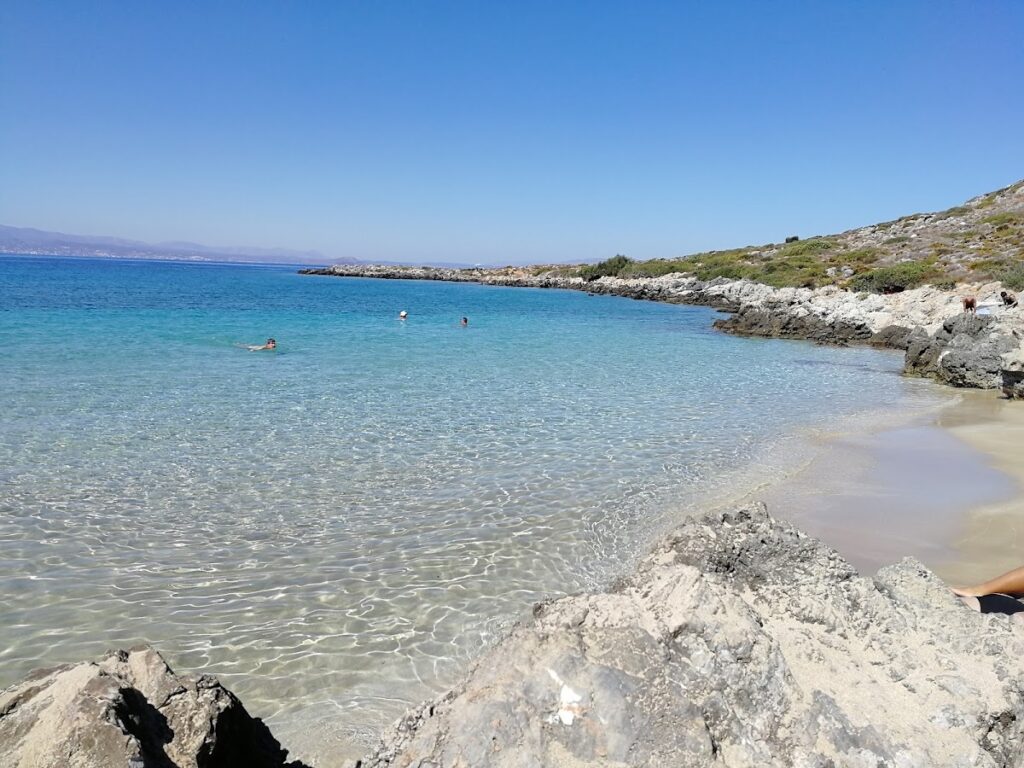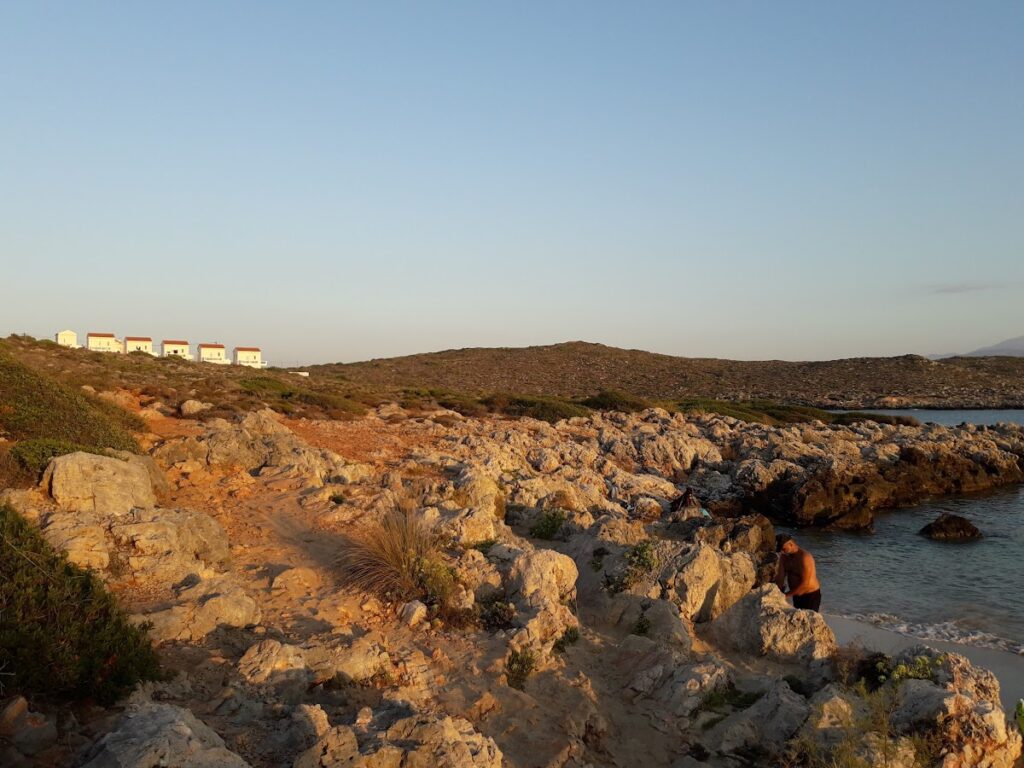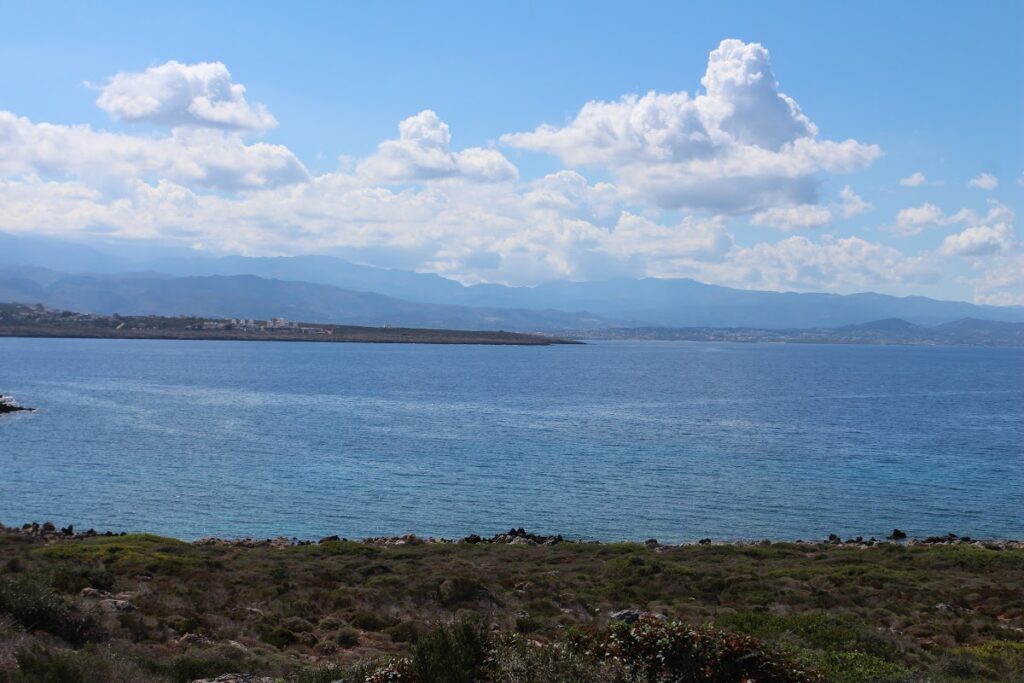Beaches near Galangádhos, in Chania region
Here is list of closest beaches to Galangádhos
- 3.4 km
- Loutraki beach
- Sand
- Shallow
- Blue
The coastal retreat of Loutraki can be found 16km to the east of the city of Chania, nestled near the American military base in Souda. Loutraki, along with the nearby Marathi, are the two primary tourist hotspots in the eastern region of Akrotiri.
Loutraki boasts a tranquil beach with fine, soft sand and crystal clear, shallow waters, making it an ideal spot for children. The beach is well-maintained and equipped with all the standard tourist facilities, all under the cool shade provided by the trees along the beach. Visitors can hire umbrellas, dine in local taverns, rent rooms for their stay, and partake in a variety of water sports.
Additionally, there is a large parking area available for visitors, which is shaded by tall eucalyptus trees.
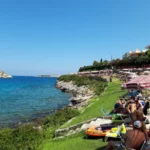
- 3.9 km
- Marathi beach
- Sand
- Shallow
- Blue
Situated 17km east of Chania and 5km east of the Creta Naval Base in Souda Bay, Marathi beach can be found on the southeastern coast of Akrotiri. The beach is a well-known resort in the Chania area, drawing a large number of visitors each summer, particularly families and the elderly.
Marathi boasts two exquisite sandy beaches with shallow, calm waters, perfect for children. These beaches are well-shielded from wind due to their southern orientation and offer a stunning view of the Drapanos Cape and the White Mountains. A small pier, which serves as a harbor for fishing boats and small ferries, separates the two beaches. The area is well-equipped with all essential amenities for a comfortable visit.
Opposite Marathi beach, about 500m away, lies the small island known as either Marathi or Palia Souda (Paleosouda). One can swim to reach the island, which is home to a small pine forest. Its western coast is steep, making it a popular destination for scuba divers.
Venturing northwards along the beach road, you will stumble upon the ruins of the Roman town known as Minoa, believed to have been a seaport city of Aptera. The archaeological site, also referred to as the Small Palace of Minos (although it doesn’t date back to the Minoan Times), reveals remnants of buildings and baths likely related to an ancient harbor, military facilities, and a mansion. Notably, a semicircular wall can still be seen on the beach.
Heading northwest from here, after passing a section of the beach frequented by ducks, we come upon the church of St. Spyridon. This spot offers a beautiful seascape perfect for wedding or christening ceremonies.
In contrast, if we head southwest from the port, we reach the end of the harbor’s pebbly beach known as Sosorides. This beach is a local favorite, known for its serene, unfussy atmosphere. Sosorides can be accessed via a paved road that begins a few meters before Marathi when approaching from Chania.
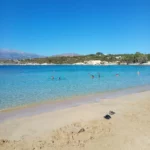
- 5.3 km
- Kalami beach
- Fine Pebbles, Sand
- Normal
- Blue
The village of Kalami is situated 15km to the east of Chania city, nestled on the southern shore of Souda Bay and in close proximity to Megala Chorafia village. It boasts a breathtaking panorama of the bay and Souda fort. Moreover, it’s near the ancient city of Aptera and the Turkish forts of Intzedin and Aptera.
A mere 500m north of the village, a delightful beach adorned with rounded pebbles and deep water is found. At the beach’s east end, there’s a small harbour housing various boats. The beach is a favourite spot among the locals, although it’s yet to be fully organized. There are a handful of umbrellas and tamarisk trees scattered about. The village and the surrounding region offer a few accommodation and dining options.
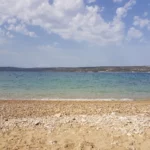
- 5.9 km
- Kalathas beach
- Sand
- Shallow
- Blue
The seaside village of Kalathas is located 12km northeast of Chania city, in a natural bay at Cape Akrotiri, which is open to the north winds. Current Kalathas is a relatively new village, which has been inhabited by residents of Chania who wanted to live away from the city centre.
The beach in front of the village is beautiful, with fine sand and shallow crystal clear water. Opposite Kalathas, there is a small island which you can easily reach by swimming.
The beach is very well organized with umbrellas, water sports, restaurants, hotels, lifeguards, mini markets, etc.
West of the main bay, beyond the rocky end, there is a secluded sandy bay. This is not organized and is ideal for those who do not like crowded places.
Tip: If you continue towards the far right of the beach, you will find a rather remote beach with usually hardly any people should you wish to avoid the crowded part of the beach.

- 6.7 km
- Vlites beach
- Sand
- Shallow
- Blue
Vlites beach, a well-sheltered spot situated in the grand Souda bay, lies about 5 km to the east of Chania city and holds the title of the longest beach in the bay. This expansive beach takes shape north of the Moronis River’s mouth, extending northwards to the Souda Bay War Cemetery.
The sandy seashore is ideal for kids due to its typically tranquil state and shallow waters. Previously, its closeness to both the Souda Naval Base and Souda’s commercial port led many locals to avoid swimming in its waters. However, chemical analysis has confirmed the water’s cleanliness, assuring that swimming at Vlites beach is entirely safe.
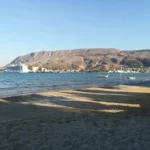
- 6.7 km
- Stefanou beach
- Fine Pebbles
- Deep
- Deep blue
Stefanou Beach, found at Seitan Limania (which translates to “satan harbours”), is situated 22km northeast of Chania and 2km east of the village of Chordaki. This intriguing location is on the eastern side of Akrotiri Cape. Named Seitan Limania due to the untamed landscape, steep cliffs, and powerful sea currents perceived as dangerous, it features three parallel, narrow, well-sheltered coves.
The northern cove is home to the breathtaking Stefanou beach, with its deep, azure waters. The beach is decorated with fine pebbles and sand, carried from a nearby quarry through the Diplohahalo canyon. To the right and left of the cove, towering marble rocks stand guard, protecting the beach from inclement weather. Its reputation has grown quickly since 2010 when an asphalt road made it more accessible; during peak season, it can get crowded, so arriving early is advised.
The road leading to Seitan Limania beach is a bit curvy and steep, but it should not be a problem for those who have driven on mountain roads before. The road has been recently paved, and during the drive, one can enjoy the natural beauty of Crete. The asphalt road descends abruptly and ends at a parking area near the beach. It is essential to put the handbrake on when parking the car and use stones to secure the tires.
To reach the beach, park the car near the church of Agios Spyridon and walk for 10-15 minutes down the path. Wearing trainers is recommended as the path can be slippery, and flip-flops should be avoided.
Seitan Limania beach does not have any amenities, which is why it is not crowded, but it is essential to bring water (at least a litre per person), sunscreen, towels, food, drinks, and entertainment such as headphones or a book.
The beach is magnificent, with soft sand and crystal clear blue waters, and one can also encounter friendly goats.
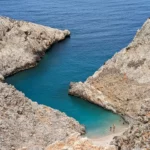
- 7.3 km
- Tersanas Beach
- Sand
- Shallow
- Blue
Tersanas is a charming coastal village situated 13km northeast of Chania, tucked away in a small cove on the west side of Cape Akrotiri. While it serves as the harbour for the neighbouring village of Chorafakia, Tersanas is a well-developed area and a popular holiday destination.
The beach at Tersanas is nestled within a natural harbour that faces southwest. With its white, fine sand and crystal-clear shallow waters, it’s a small beach that can get crowded, especially on weekends. Visitors can take advantage of the available sunbeds, umbrellas, showers, and snack bars. Its calm waters and proximity to tourist facilities make it perfect for families, and there are buses from Chania that stop at Tersanas.

- 7.3 km
- Agios Onoufrios Beach
- Sand
- Shallow
- Blue
Agios Onoufrios, a serene seaside village located 8km north of Chania and close to Kounoupidiana, is a hidden gem worth visiting.
The beach of Agios Onoufrios is quiet and sandy, and well protected from the winds, as it is located in a deep bay, along with a picturesque small port. Although not well-organized, it’s a popular spot for locals who come for the picturesque landscape and traditional taverns. The only downside is the fuel tanks located northwest of the beach, which break the peaceful atmosphere.
Despite this, the beach is equipped with sunbeds, parasols, showers, changing rooms, and a lifeguard service. For sports enthusiasts, there are two volleyball courts available. Overall, Agios Onoufrios is a great destination for those looking for a quiet beach away from the crowds.
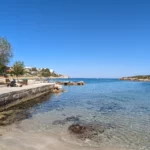
- 8.1 km
- Kalives beaches
- Sand
- Shallow
- Blue
The coastal resort of Kalives is situated 19km west of Chania, along the southern edge of Souda Bay. This charming village is nestled in a verdant valley where several rivers meander. Its name, which translates to “Huts” in Greek, is thought to have originated from the primitive structures erected by farmers for summer overnight stays. The rivers of Xidas and Mesopotamos flow near the village’s eastern boundary. The combination of these rivers with the sea’s many springs results in a cooler sea temperature.
Adjacent to the Xidas river, both east and west, are two sandy beaches with shallow waters, exposed to northern winds. Named Xidas and Maistrali respectively, these beaches are well-equipped with standard tourist amenities. A petite, picturesque bridge at Xidas river’s mouth connects these two beaches. The scenic harbor of Kalives neighbors Maistrali and is connected to Chania through regular bus services. The area also houses banks, post offices, clinics, shops, and more.
North of Kalives, at the mouth of the Kiliaris river, lies the serene beach of Kiani Akti or Glaros. The Kiliaris river, which carries water from the White Mountains, maintains a year-round flow, a rarity in Crete. This results in cooler seawater near the river.
Kalives’ geographical position and fertile soil have made it a place of habitation since ancient times. It is believed to be the location of the ancient city Amfimatrion. Notable historical events include the construction of the Castel Apicorno fortress in 1206 and the village’s destruction by the pirate Barbarossa in 1538. The village is also close to the ancient city of Aptera and the Ottoman forts of Intzedin and Aptera.
The harbor houses a German cannon concealed in a cave on the other side of a mountain. A small window at the tunnel’s end offers breathtaking views of the cliffs and sea. This is merely one example of the German defensive structures scattered across the broader Apokoronas and Akrotiri Cape area.
Visitors are encouraged to stroll through the village’s picturesque narrow streets, eventually reaching the village’s central square, home to a large plane tree and the Agia Paraskevi church. The church, adorned with frescoes, was constructed during the German Occupation in World War II.
An old Venetian mill, one of Crete’s most complex, is located along the Mesopotamos river. Built from stone and kourasani (a mixture of mortar and ground tile), it is renowned for its durability.

- 8.1 km
- Maherida Beach
- White Sand
- Shallow
- Turquoise
Macherida, a small beach, is situated 14km northeast of Chania and 1km west of Chorafakia village, in close proximity to Tersanas. Its name is derived from the Greek word “machairi” meaning “knife,” inspired by the knife-like appearance of a rocky cape at its northern end. Another theory suggests it was named after the Gladiolis italics flower, known as “macherida” in Greek.
The bay, facing southwest, is typically calm. At the heart of the bay lies a beautiful beach with white sand and turquoise water, enclosed by sharp rocks. The water clarity here is exceptional due to the sea currents that frequently change direction, sweeping away any rubbish. While the beach isn’t developed, there has been some residential construction in the vicinity in recent years. Macherida beach, with its seclusion, is a popular spot for nudists and is one of the preferred beaches for the gay community in Chania.
The surrounding coastline serves as a unique habitat for various wild species. Close to the main road, amidst the rocks, is the Macherida pond that resembles a crater with saltwater springs. This provides a sanctuary for water snakes, turtles, and seagulls. The city bus route to Stavros passes through Tersanas and runs close to Macherida beach.

No results available
ResetBeaches in other nearby areas
No results available
Reset













